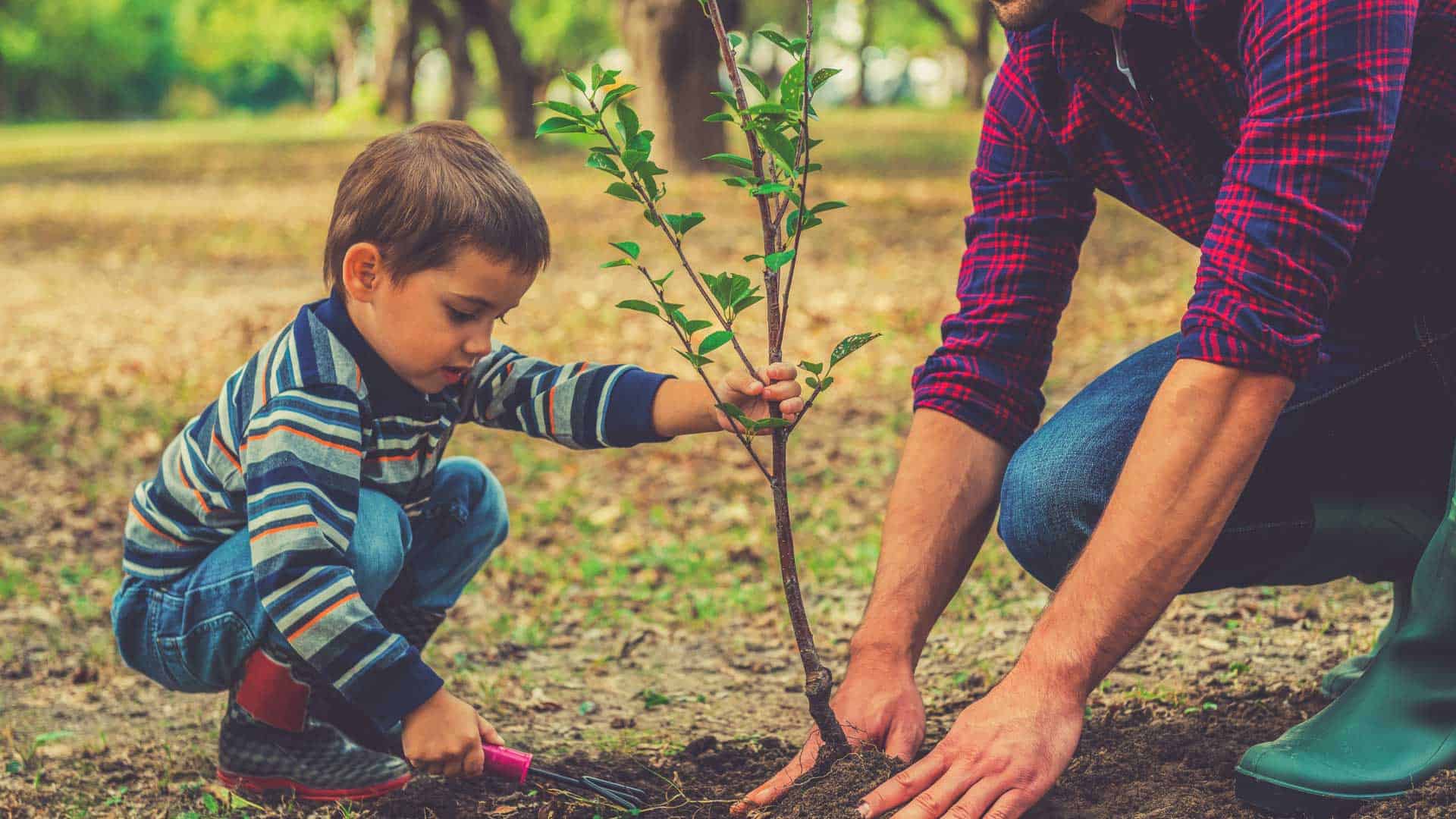Often used as focal points of our landscaping, trees enhance the beauty of a home or neighborhood and provide a host of benefits for humans and the planet. They play a crucial role in the environment. There are all good reasons to plant a tree at home. Here are some tips to guide you:
Which tree to choose?
When it comes to ornamental trees, there’s no shortage of choice! Apart from the purely aesthetic aspect (your tree must please you!), check if you have set your sights on a variety that suits your type of soil, the amount of sunshine, and which is adapted to our climate. The more accurate your aim, the less you will have to pay special attention to it.
Additionally, consider the width, height, and shape of your tree in 10, 25, or 50 years. Staying away from drainage pipes and electrical wires can save you a lot of hassle. You’ll thank yourself later…
When to plant?
A priori, any time. However, trees remain living beings for which a temperature shock can cause some inconvenience. Yours will therefore be more likely to escape unscathed if it is planted in spring or autumn. What’s more, water is more abundant in the soil at these times of the year.
Comment planter?
The best way to avoid making mistakes is to proceed methodically. We therefore invite you to follow these few easy steps:
- Be sure not to knock or damage the tree during transport. (Damaging the bark causes sap to come out and can cause rot problems.)
- Dig a hole about twice as wide and as deep as the root ball. Stir the bottom to facilitate the development of the root system and add a layer of 3/1 Potting Soil for TREES & SHRUBS.
- Gently place the tree in the hole, making sure the root ball is equal to or slightly greater than the depth of the hole.
- Add natural fertilizer TRANSPLANT WITH GROUND BONE to stimulate the biological activity of the soil and thus promote abundant and vigorous roots.
- Add 3/1 Soil for TREES & SHRUBS up to the collar (the junction between the roots and the trunk) to obtain 2X faster growth and promote better recovery following transplantation. Compact lightly.
- Make a watering pit (dike approximately 10 to 15 cm high around the root ball) and water generously so that the soil at the bottom of the hole and the root ball are completely wet.
- Add your favorite mulch. A good natural cedar mulch, brown, red, or black (to taste) helps maintain some moisture in the soil and controls the growth of weeds (and what’s more, it’s beautiful!).
- If necessary, plant a stake in the rootball, even deeper than the hole on the side where the prevailing wind comes from, to adequately support the tree during its growth. You can remove it in about a year, once the tree is well established and its root system is established.
And fertilization in all this?
We recommend adding compost to the soil surface every 2 or 3 years to meet their needs. Whether you have a recently planted sapling or well-established trees, the best time to fertilize them is early spring, before active growth begins. Fall is also a good time to apply fertilizer, as this helps them recover from the growing season and prepare for the harsh winter. Young trees, whose trunk diameter is less than 15 cm, can particularly benefit from a regular supply of natural fertilizer for TREES & SHRUBS. Simply add it to the base of the trunk every 4 weeks.
As you probably know, trees are the pillars of any landscaping. Now it’s up to you to highlight them with matching plants and flowers. And we can help you with that too!









